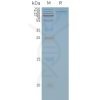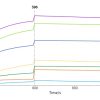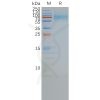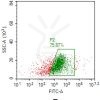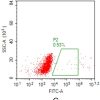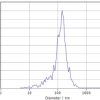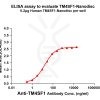| Tag | C-Flag&Strep Tag |
|---|---|
| Target | |
| Synonyms | GALR4; GALRL; GPCR; GPCR-2037; PGR7 |
| Description | Human GPR151-Strep full length protein-synthetic nanodisc |
| Delivery | In Stock |
| Uniprot ID | Q8TDV0 |
| Expression Host | HEK293 |
| Protein Families | Druggable Genome, GPCR, Transmembrane |
| Protein Pathways | N/A |
| Molecular Weight | The human full length GPR151-Strep protein has a MW of 46.6 kDa |
| Formulation & Reconstitution | Lyophilized from nanodisc solubilization buffer (20 mM Tris-HCl, 150 mM NaCl, pH 8.0). Normally 5% – 8% trehalose is added as protectants before lyophilization. Please see Certificate of Analysis for specific instructions. Do not use solvents with a pH below 6.5 or those containing high concentrations of divalent metal ions (greater than 5 mM) in subsequent experiments. |
| Storage & Shipping | Store at -20°C to -80°C for 12 months in lyophilized form. After reconstitution, if not intended for use within a month, aliquot and store at -80°C (Avoid repeated freezing and thawing). Lyophilized proteins are shipped at ambient temperature. |
| Background | This protein is an orphan member of the class A rhodopsin-like family of G-protein-coupled receptors (GPCRs). Within the rhodopsin-like family, this protein is a member of the SOG subfamily that includes somatostatin, opioid, galanin, and kisspeptin receptors. The orthologous mouse gene has a restricted pattern of neuronal expression which is induced following nerve injury. All GPCRs have a transmembrane domain that includes seven transmembrane alpha-helices. A general feature of GPCR signaling is the agonist-induced conformational change in the receptor, leading to activation of the heterotrimeric G protein. The activated G protein then binds to and activates numerous downstream effector proteins, which generate second messengers that mediate a broad range of cellular and physiological processes. |
| Usage | Research use only |
| Conjugate | Unconjugated |
服务热线
400-006-0995
18062749453





